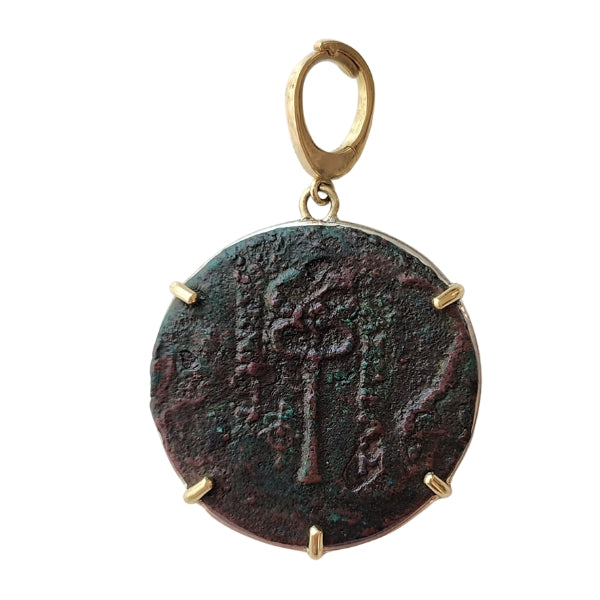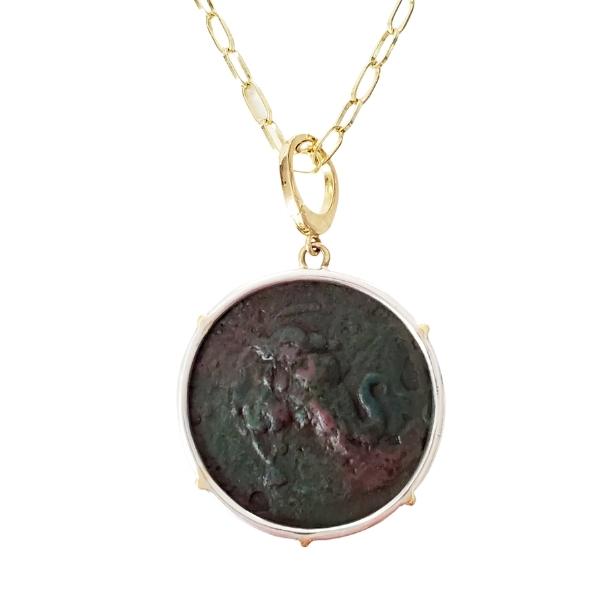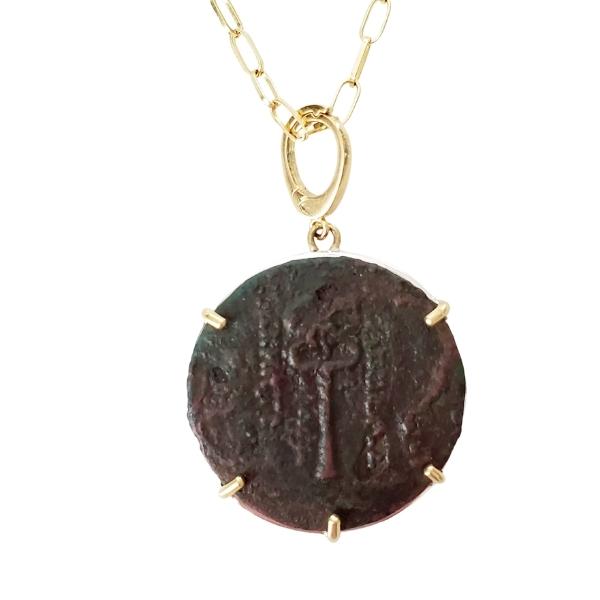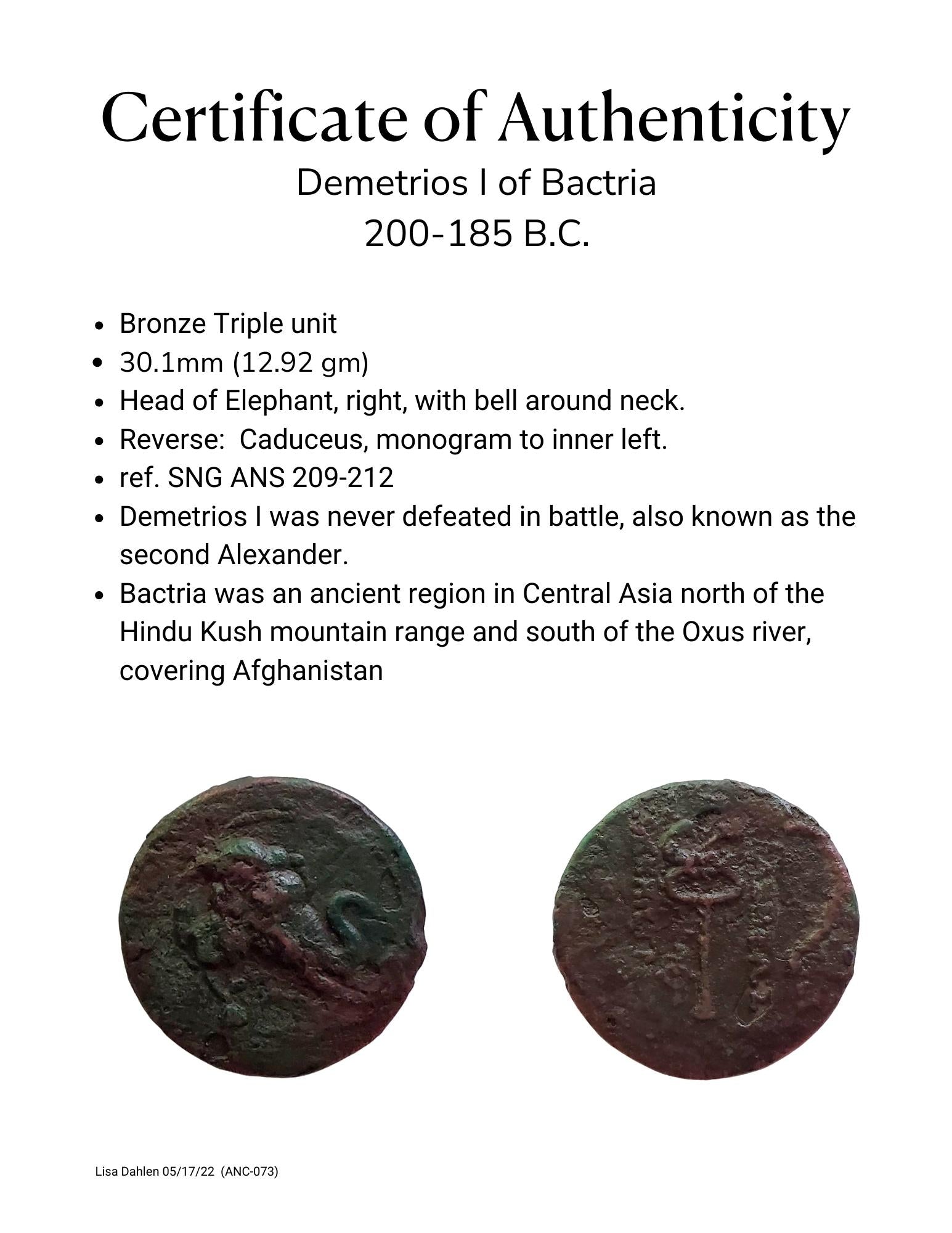Dated: 200-185 BCE
Demetrios I of Bactria was never defeated in battle and was known as the second Alexander.
The rejoicing elephant, depicted on the front of the coin, is surrounded by the royal bead-and-reel decoration. The elephant, one of the symbols of Buddhism and the Gautama Buddha, possibly represents the victory of Buddhism brought about by Demetrios.
The coin's reverse depicts the caduceus, a symbol of Hermes and also a symbol of reconciliation between two fighting serpents, which is likely a representation of peace between the Greeks and the Sungas and likewise between Buddhism and Brahmanism. (hellenicaworld.com)
















